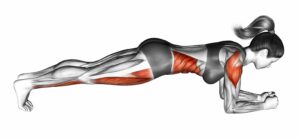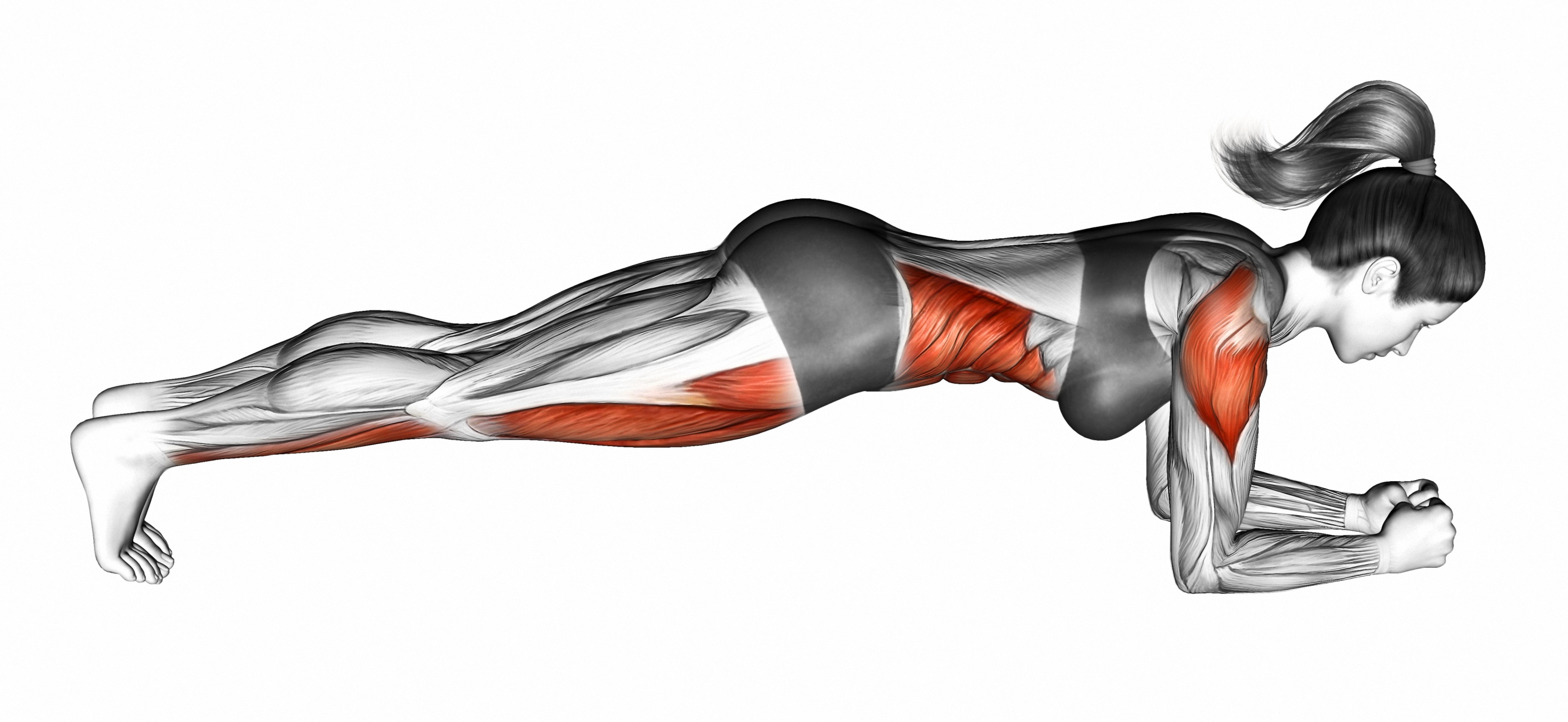
There’s more than one way to increase muscle endurance and build strength. One type of exercise you might be less familiar with are isometric exercises. These are movements where the targeted muscles are placed under tension but they don’t change in length. Instead, the muscle holds tension at a fixed length. This is in contrast to isotonic exercises where the muscle actively contracts and relaxes. When a muscle contracts it’s called a concentric contraction. When it lengthens, an eccentric contraction. With isometric exercises, the muscle holds tension but doesn’t move.
Many isometric exercises require no equipment. All you need is an exercise mat. Examples of isometric exercises include planks, wall sits, and glute bridges. These exercises are certainly convenient, but how effective are they for building muscle strength?
Isometric Exercises for Strength Building
Previous research suggested that isometric exercises only build strength at the angle which you hold the joint, give or take 10 degrees. For example, if you hold a muscle at 90 degrees, the muscle will become stronger at that angle. It may also become stronger at 80 degrees and 100 degrees but won’t gain strength at other angles.
However, a study published in the Scandinavian Journal of Medicine and Science in Sports showed that isometric exercises may also improve strength at angles that come before 90 degrees too. So, an exercise, where you isometrically hold a muscle at 90 degrees can potentially strengthen the muscle at angles between 0 degrees and 90 degrees, and even up to 100 degrees. So, isometric exercises may build strength at more angles than originally thought.
Despite the fact that you don’t build strength at every angle when you do isometric exercises, isometric exercises offer benefits. For one they improve muscle endurance and stimulate your muscles in a way that isotonic contractions do not. Here are some of the best:
Planks
Planks are an isometric exercise designed primarily to work the muscles in your core. Holding a plank builds muscle endurance in your arms and shoulders as well. Many fitness trainers believe planks are safer for the back than crunches as you aren’t flexing your pelvis. Plus, you can also do a variety of plank variations that are more challenging. Be sure to keep your abs tight and your body in a straight line. No sagging hips! That’s cheating.
To do one:
•Get on your hands and knees on a mat.
•Place your elbows on the mat with your hands and elbows about shoulder-width apart.
•Step your feet back until your entire body is in a straight line, your weight is on your toes, and you’re looking down at the mat.
•Hold this position for 30 seconds while keeping your abs and back tight.
Supermans
Supermans is an isometric back extension exercise that you may not be familiar with. This appropriately named exercise strengthens the muscles in the lower back as well as the glutes. Doing them also helps maintain muscle balance, as most people spend too much training time on their abs and don’t give their back enough attention.
To do one:
•Lie face down on a mat with your arms extended above your head on the mat.
•Lift your legs, arms, head, and neck off the mat, so that your body forms a shallow “U.”
•Hold the position for 4 seconds before releasing. Gradually increase the time that you hold the superman pose as the exercise becomes easier.
Walls Sits
Walls sits are an ideal exercise for strengthening the quads, the muscles in the front of your thighs.
To do one:
•Place your back and arms against a wall with your feet shoulder-width apart.
•Lower your body into a squat position while holding your back against the wall.
•Stop when your knees are at a 90-degree angle.
•Hold this position for 20 seconds. Add more time as you gain muscle endurance.
Glute Bridges
Glute bridges, as you might have guessed, work the glutes, a muscle that needs to be strong as it’s a major power generator. Glute bridges also work the rectus abdominis, the biggest muscle in your abs, obliques, and spinal muscles.
To do one:
•Lie on a mat with your knees bent and arms flat on the mat by your sides.
•Thrust your hips up toward the ceiling while keeping your weight in your heels.
•Hold for 10 seconds.
•Lower your body back to the floor.
•Repeat
Holds
You can also add an isometric component to other exercises, including bodyweight exercises. This will increase the time the muscle is under tension. For example, when you do a push-up, lower your body close to the mat and hold for as long as you can before coming back up.
Conclusion
Hopefully, you now have a better idea of how isometric exercises work and how to add them to your routine. You’ll be glad you did!
